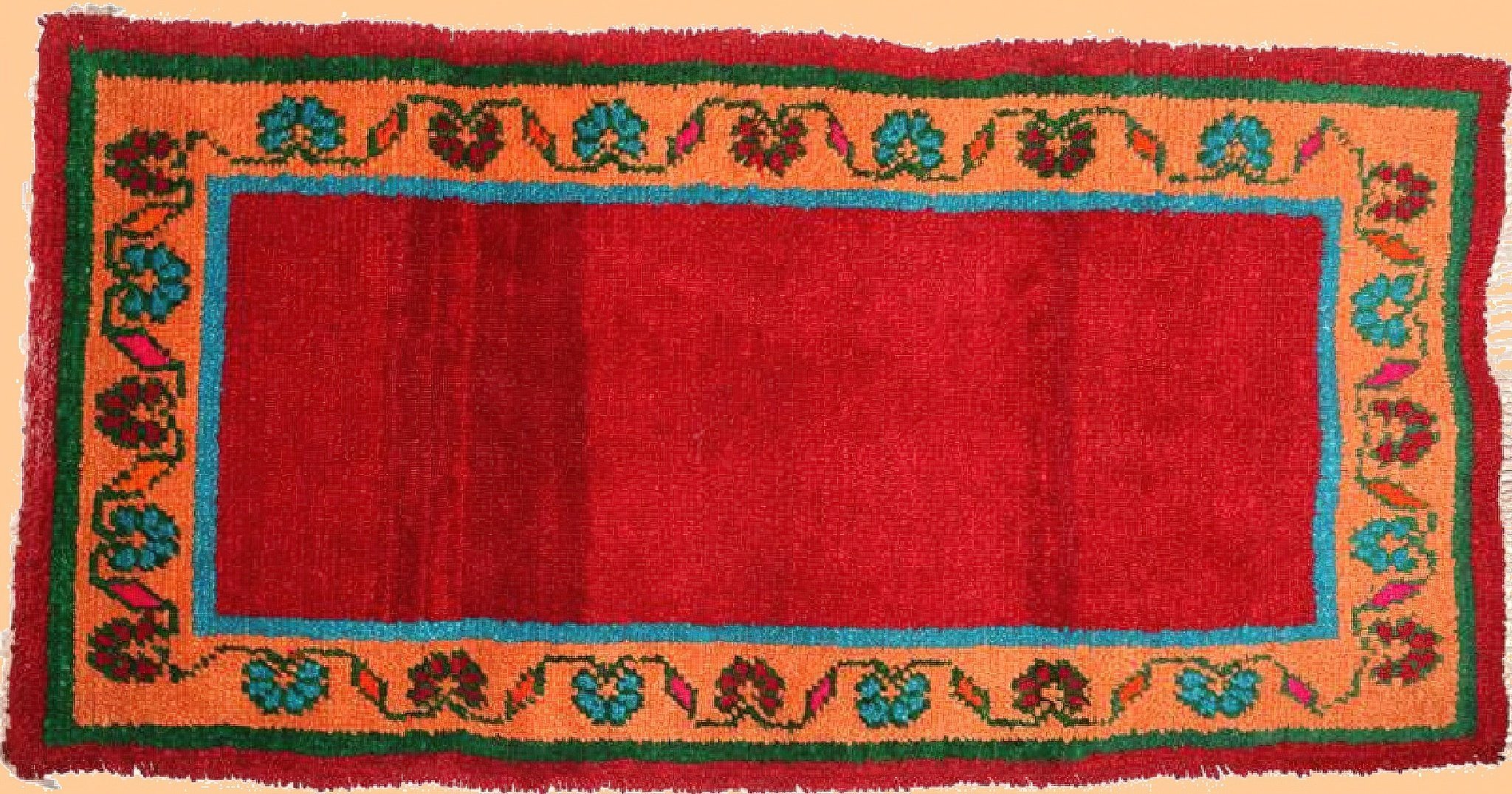
MOTIF OF SAJJADA IN LITERATURE
Author: Fatima Kadić-Žutić, PhD, Faculty of Islamic Studies of University of Sarajevo • Photo: Čvorana sajjada from Blagaj, 20th Century, National Museum BiH

Serdžada
Serdžada majke stare
rasula je svoje šare,
kao da se polje cijelo
uz basamke uspelo,
da posadi cvijet do cvijeta,
tamo kuda majka šeta,
hoda lahka, kao dah,
da ne bude cvijeće strah,
i da podu, njenih ljeta,
kakav korak ne zasmeta.
U kutku gdje sjedi majka,
svaka šara, kao bajka,
i dok vani noć sve skriva,
od njih soba još je živa,
još je puna svijetlih zraka
što ne daju ruci mraka
da uzbere kakav cvijet
dok u tami sniva svijet.
I dok stara majka diše,
soba, svijet – sve miriše.
(Sajjada of old mother
scattered its pattern
as if the meadow’s whole
the stairway laid down
to plant flower’s array
to the mother walking way,
with her steps of the wind
not to move flowers’ fear
not the ground of its age
be disturbed by her steps.
In the mother’s resting place
every pattern like a tale,
outdoors hidden by night,
but patterns make the room alive
still full of rays of light
to prevent the darken hand
to pick up some flower
while the world dreams at night.
And, with the old mother’s breath
Room, the world spread its scents.)
(Ismet Bekrić)
The term sajjada was eventually adopted for all rugs of smaller dimensions which were spread on the floor or furniture (Figure 17). As we can see, Bekrić describes sajjadas spread along stairs and on the sofa. In Islam, the border between sacred and profane, which is so easy to draw in some other religious system, is porous or non-existent, as Prophet, p.b.u.h., says: “The whole earth has been made a place of prayer (masjid )ˮ (Bukhari). Therefore, it was easy for Muslims to label any woven rug of small dimensions a sajjada, although its name means “the place where prostration (sajdah) is performed”, without violating the meaning of the prayer rug, since one does not enter Muslim houses shod. Bekrić sang about a fairy-tale world with his mother as the main character. In his poem, we see motifs of flowers and a flower meadow which requires an easy step so that flowers do not get hurt. From the flowers, the image expands to motifs of light, mother's clean breaths and fragrance of the room, which is transferred to the fragrance of the whole world, and infallibly describes the feeling of Jannah.
At other places, the motif of prayer on sajjada reflects the author's yearning for his origin or source, not only motherly but the origin of everything that has been created. Džemaludin Latić sings about a glass of bile in the heart of believers, which they will pour on the sajjada in night hours. Here, we encounter the sajjada as the place of munajat, or confidential whispering between the worshiper and Rabb, Lord. Even Ivo Andrić, in his description of the prayer kilim as a rug which “cures any pain and undoes any suffering”, grasped this segment of the understanding of sajjada.
Almost all Muslim peoples have woven prayer rugs of palm leaves, reed, hemp, wool, cotton and silk. Sajjadas have been fulled of felt, embroidered, made with the techniques of appliqué on woolen background or print on the cotton cloth. They have been one of the most beautiful expressions of craft and art form they belonged to since a particular attention has been paid to their making, which is proven by innumerable preserved items of different Muslim peoples in all the described techniques, and we in Bosnia have also made a modest contribution to this artistry.
Čvorana sajjada from Blagaj, 20th Century, National Museum BiH
